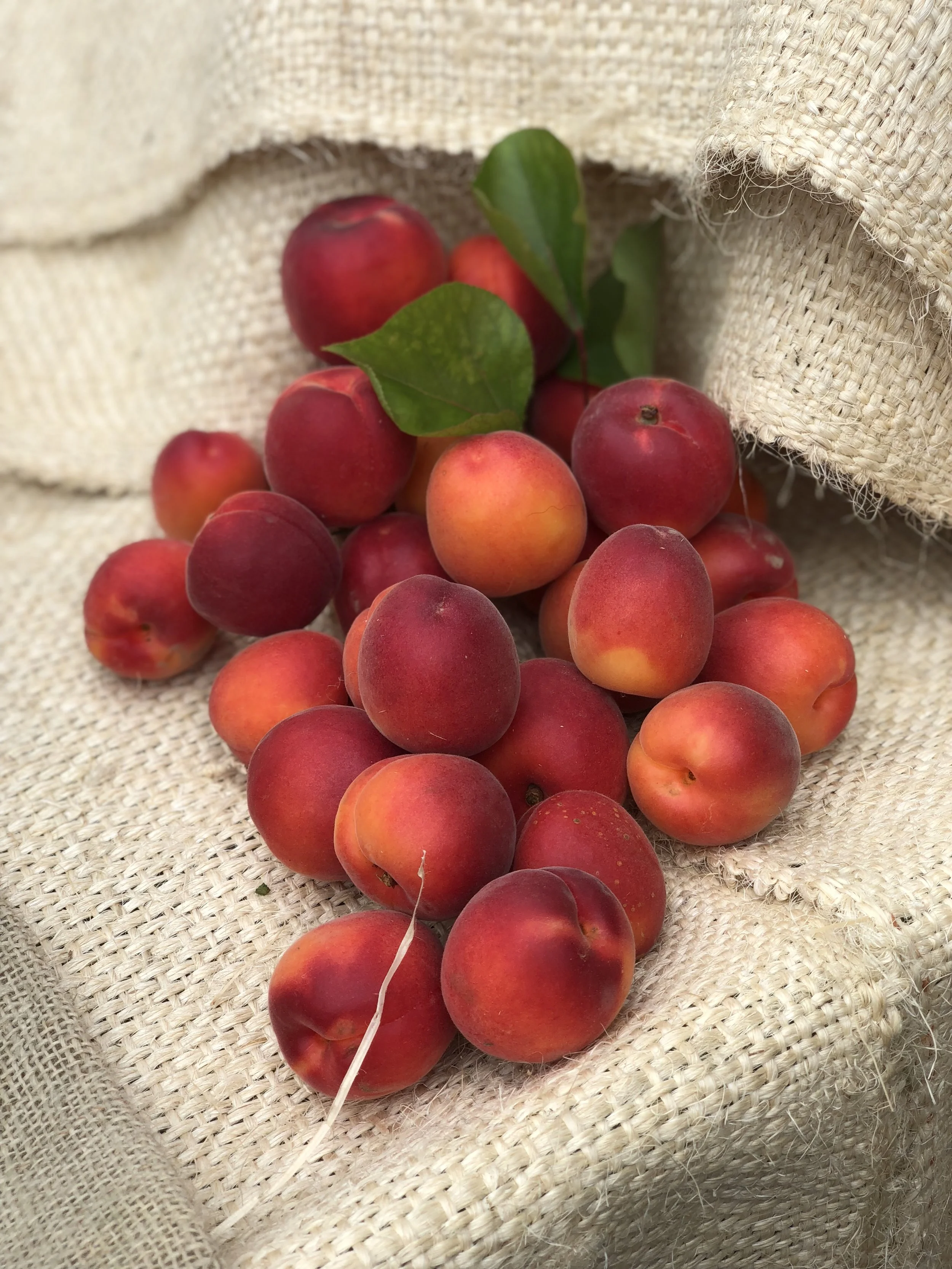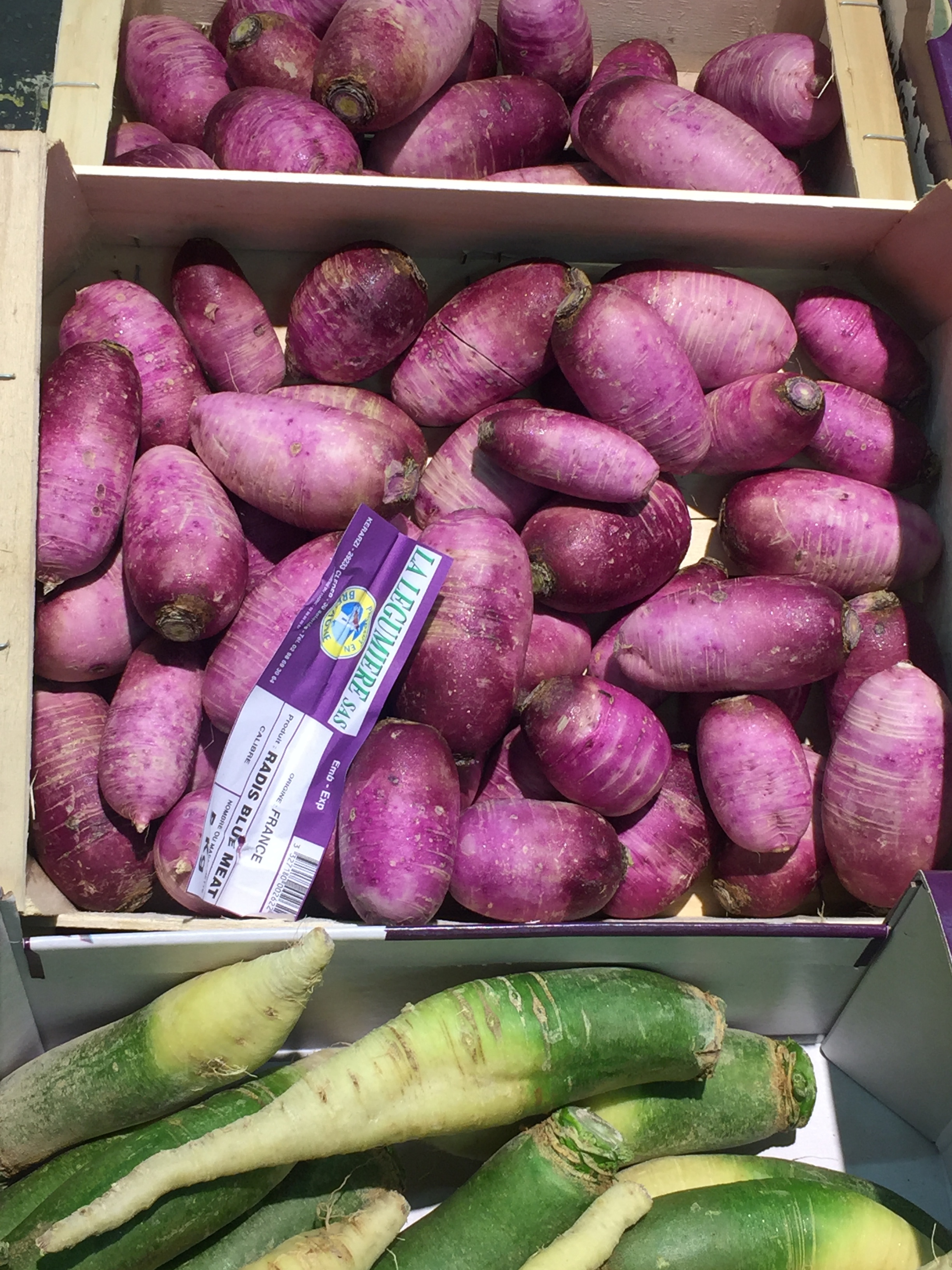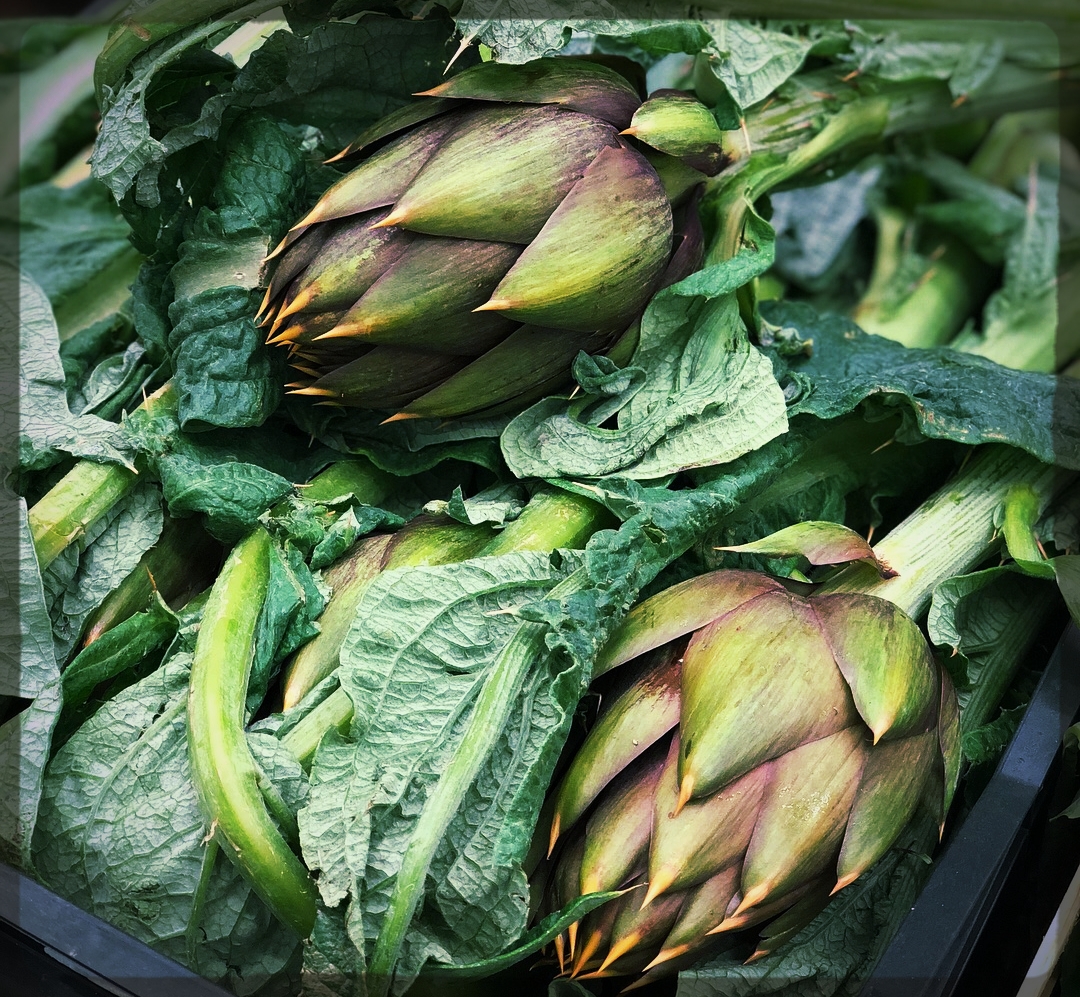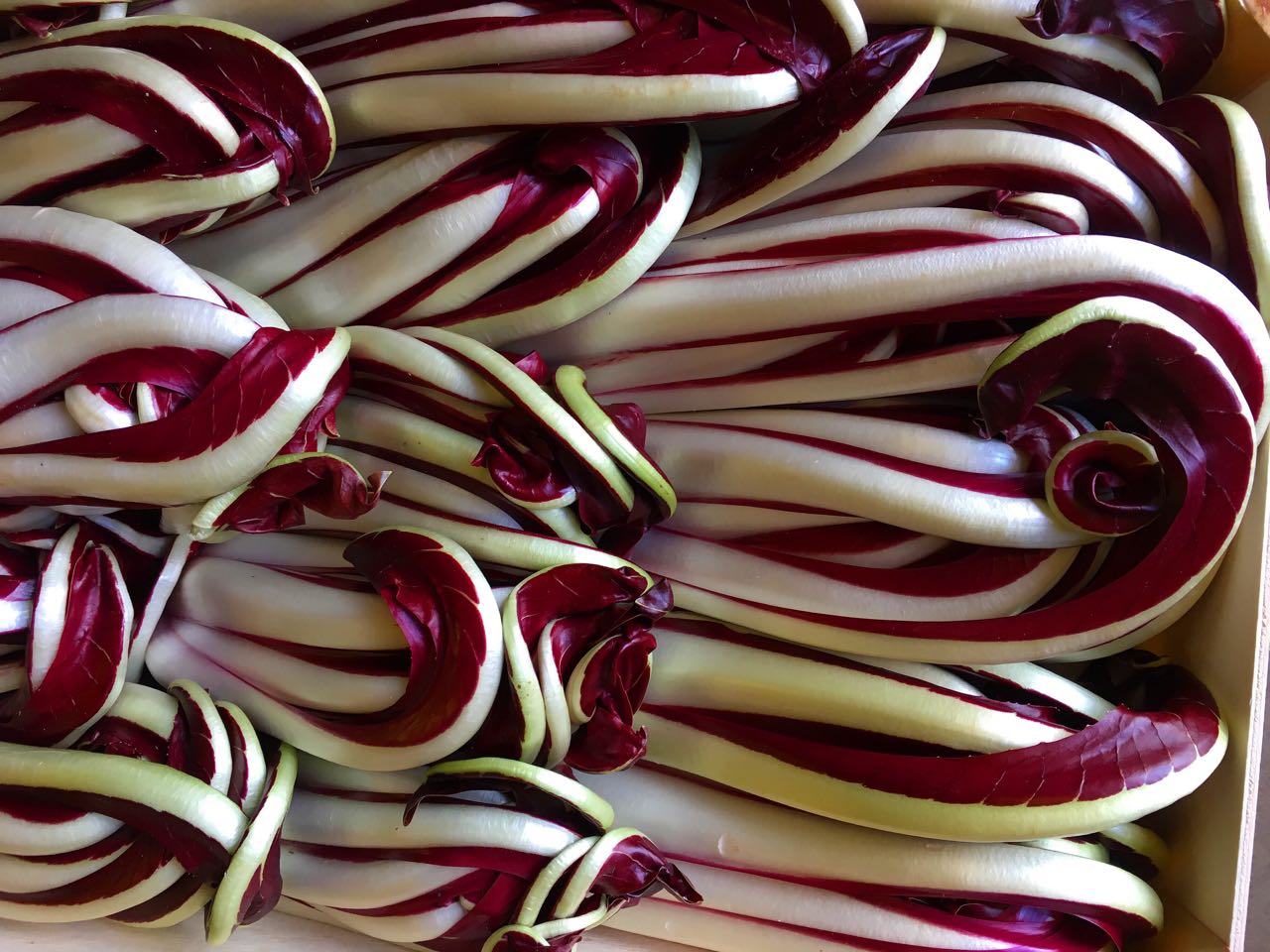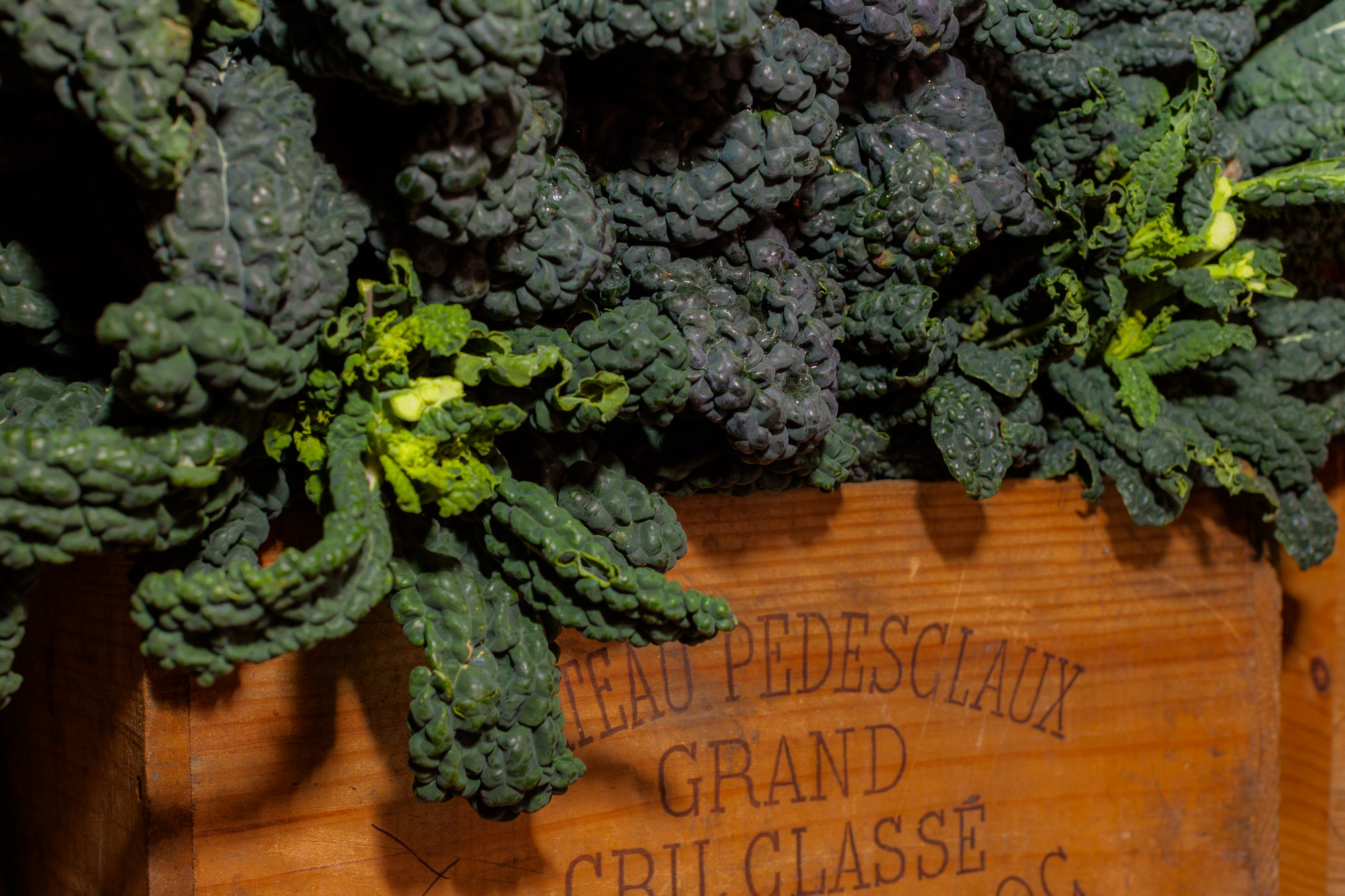Ruby Apricots
Photo © Puntarelle&Co Ltd
Apricots
The Apricot tree blossoms early, soon after the almond, which means that the flowers are very often caught by frost. The Apricot is a difficult fruit to grow in the UK as the fruits also need to ripen on the tree. Not that some fruit farmers in southern England don’t try – apricot trees have been cultivated here since the mid-16th century - but success remains a hit and miss affair, subject to the vagaries of our weather. This is a shame because two of the best varieties of Apricot – Blenheim and Moorpark – were originally bred in England. In favourable years, the English-grown crops can be good but most often we have to treat them as cookers.
For Apricots that need very little embellishment, we turn to the warmth of Italy and France, though varieties are limited. It’s possible to bring out the floral, tropical flavours even in early fruits if you treat them right. Early crops are best turned into jam, compote, sorbet or pureed for ice cream. They can also add a lovely sweet-sharpness to savoury stews. By the end of June Apricots from southern Europe can usually be eaten just as they come. Generally, the stronger the colour, the sweeter the fruit, and the simpler their treatment should be.
Apricots have an affinity with almonds. If you crack open an apricot stone you’ll find within a small almond-like kernel, or noyaux, which you can add to your recipe for a touch of bitter almond flavour. Don’t overdo it, though, as the noyaux contains amygdalin, a compound which converts to cyanide in the body. Roasting the kernel first extracts this compound. Green Almonds are around at the same time as Apricots so try poaching apricots with a little sugar and a vanilla pod until soft but not collapsed and serve scattered with slivers of green almonds; make an Apricot Tart or Galette; with early fruits, make Apricot Jam, for sure; stuff them by halving and pitting the fruit, place cut-side-up in a dish and scatter an almond crumble topping over them before roasting on a medium heat; or make the delicious recipe for Baked Apricots with marzipan filling and almond crumble from Honey&Co: The Baking Book – partially halve and pit the fruits, stuff with a slice of marzipan, brush them with soft butter and roll in demerara sugar before roasting until soft. Honey&Co make an almond crumble topping flavoured with mahleb (a spice made from cherry kernels), spread it thinly on a baking tray and roast until crisp. Put the two elements together and serve with cream (their suggestion is for brandy cream).
Baked Apricots with marzipan filling & almond crumble
Photo ©Evie Saffron Strands


